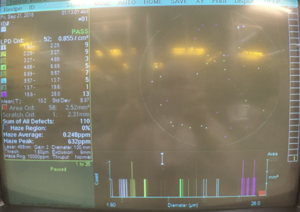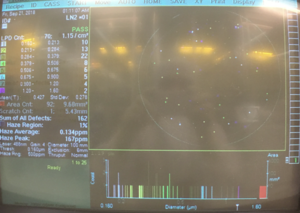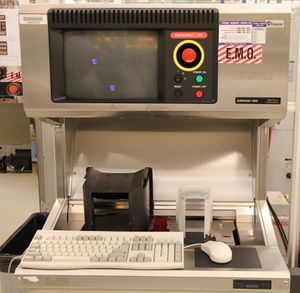Surface Analysis (KLA/Tencor Surfscan): Difference between revisions
Jump to navigation
Jump to search
Content deleted Content added
No edit summary |
No edit summary |
||
| Line 17: | Line 17: | ||
*[[media:Surfscan-Operation-Manual.pdf|Operations Manual]] |
*[[media:Surfscan-Operation-Manual.pdf|Operations Manual]] |
||
**''For detailed measurement info, it is highly recommended that you read the manual.'' |
**''For detailed measurement info, it is highly recommended that you read the manual.'' |
||
*[[media:Surfscan-Surfscan 6200 info.pdf|Surfscan Info]] |
*[[media:Surfscan-Surfscan 6200 info.pdf|Surfscan Info]][[File:UCSBTEST.png|left|thumb|'''UCSBTEST2''' for big size particles '''(1.6-28.0)um''']][[File:UCSBTEST2 for small particles.png|left|thumb|'''UCSBTEST2''' for small size particles '''(0.16-1.6)um''']] |
||
*[[Standard recipes]][[File:UCSBTEST.png|left|thumb|'''UCSBTEST2''' for big size particles '''(1.6-28.0)um''']][[File:UCSBTEST2 for small particles.png|left|thumb|'''UCSBTEST2''' for small size particles '''(0.16-1.6)um''']] |
|||
Revision as of 21:40, 26 March 2019
|
About
This system uses a laser-based scattering method to count size and distribution of particles (or other scattering defects) on a flat wafer surface. It can scan wafers in size from 4 to 6 inches.
Documentation
- Standard Operating Procedure
- Operations Manual
- For detailed measurement info, it is highly recommended that you read the manual.
- Surfscan Info

UCSBTEST2 for big size particles (1.6-28.0)um 
UCSBTEST2 for small size particles (0.16-1.6)um
